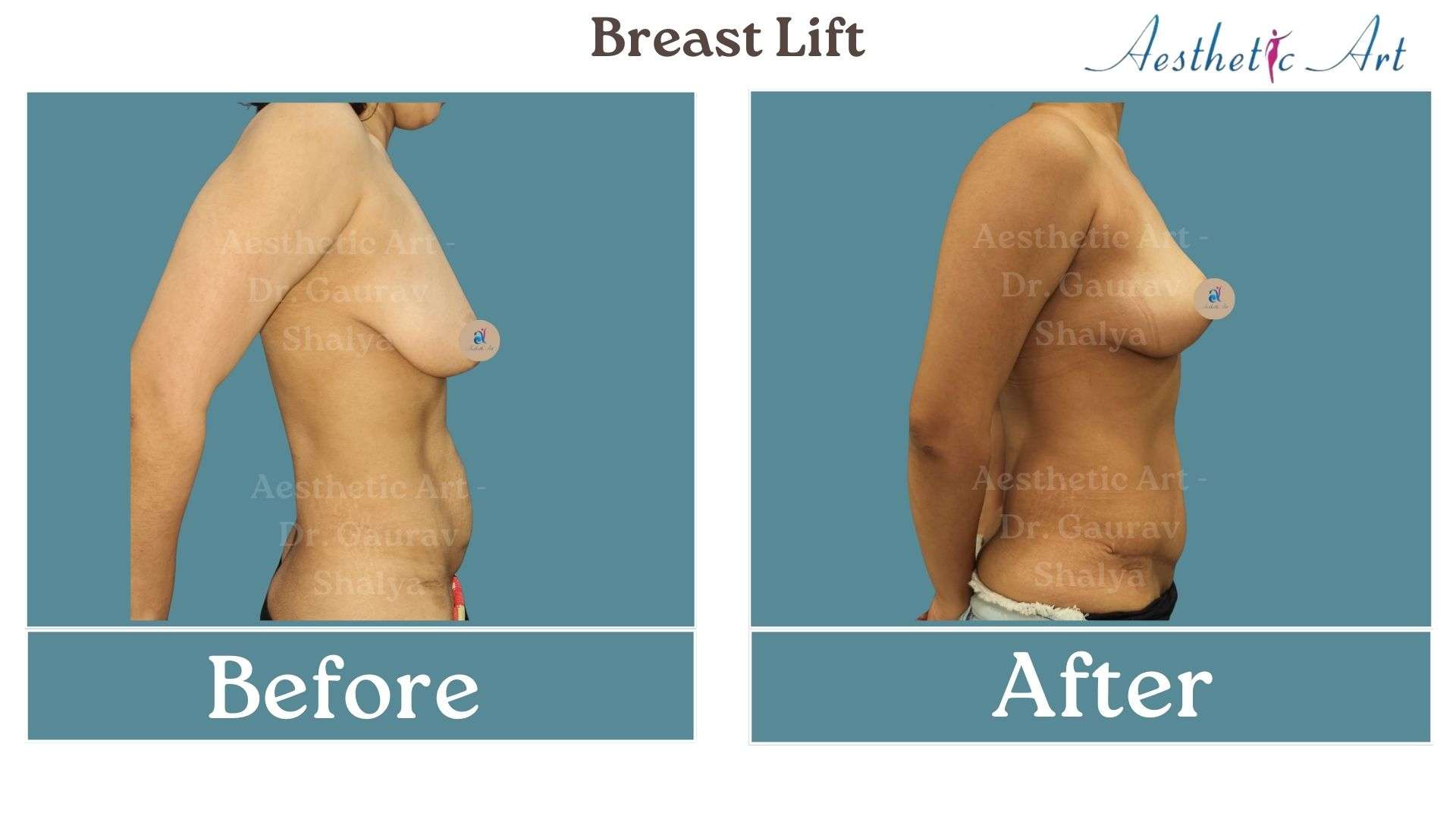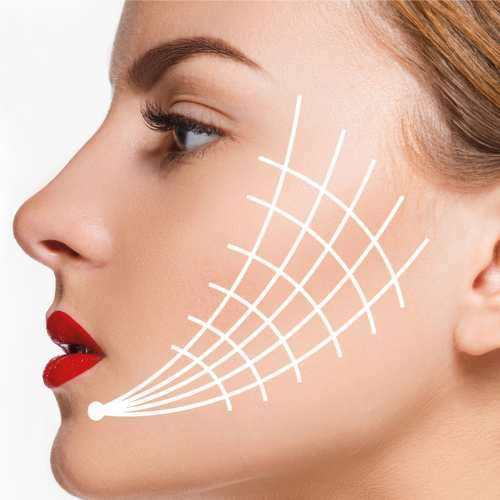What is breast lift surgery? A breast lift, or mastopexy, a surgical procedure designed to raise and reshape sagging breasts. It involves removing excess skin, tightening the surrounding tissues, and repositioning the nipples to achieve a more youthful and lifted appearance.
Q: Who is a good candidate for a breast lift?
A: Good candidates for a breast lift are women who experience sagging or drooping breasts due to factors such as pregnancy, breastfeeding, aging, or significant weight loss. It is essential that candidates are in good overall health and have realistic expectations about the outcomes of the surgery.
Q: How is a breast lift performed?
A: The specific surgical technique may vary based on individual factors, but generally, an incision is made around the areola and may extend vertically down to the breast crease or horizontally along the breast crease. Excess skin is removed, and the remaining breast tissue is reshaped and lifted. The nipple-areola complex repositioned to a higher level.
Q: What is the recovery process like after a breast lift?
A: Recovery time can vary, but most patients can expect some swelling, bruising, and discomfort in the first week. It is advisable to limit physical activity for a few weeks and follow post-operative care instructions provided by the surgeon. Patients may need to wear a supportive bra during the initial healing phase.
Q: Will there be visible scars after a breast lift?
A: Yes, there will be scars, but their appearance tends to fade over time. Surgeons make every effort to minimize scarring and often place incisions in areas where they can easily concealed by bras or swimwear.
Q: Are the results of a breast lift permanent?
A: While a breast lift can provide long-lasting results, factors such as aging, gravity, and changes in weight can affect the breasts over time. Maintaining a healthy lifestyle and stable weight can help prolong the results.
Q: Can a Breast Lifts Doctors In Mumbai combined with other procedures?
A: Yes, a breast lift can combined with other procedures, such as breast augmentation or reduction, to achieve the desired overall result. This often referred to as a “mommy makeover” when combined with procedures targeting post-pregnancy changes.
Q: How do I know if I need a breast lift or breast augmentation?
A: A breast lift primarily focused on reshaping and lifting sagging breasts, while breast augmentation involves increasing breast size. If you are happy with your breast size but want to address sagging, a breast lift may be suitable. If you desire larger breasts or want to enhance volume, breast augmentation may recommended. In some cases, both procedures can combined for comprehensive results.
Q: What type of anesthesia is used during a breast lift?
A: Breast lift surgery is typically performed under general anesthesia, ensuring that the patient completely unconscious and comfortable throughout the procedure. Your anesthesia options will be discussed with the surgeon during the preoperative consultation.
Q: Will I lose sensation in my breasts after a Breast Lifts Doctors In Mumbai?
A: While changes in sensation can occur temporarily, most women do not experience permanent loss of nipple sensation after a breast lift. However, individual experiences may vary, and it’s essential to discuss potential risks with your surgeon.
Breast lift surgery recovery
Immediate Post-Operative Period (First Few Days):
- Hospital Stay: Breast lift surgery typically performed on an outpatient basis, and most patients can return home on the same day. In some cases, an overnight stay may be recommended.
- Pain Management: You may experience some discomfort, swelling, and bruising immediately after the surgery. Your surgeon will prescribe pain medication to manage any pain during the initial recovery period.
- Wearing Compression Garments: You will likely instructed to wear a supportive surgical bra or compression garment to minimize swelling and provide support to the healing breasts.
First Week:
- Rest and Limited Activity: Rest is crucial during the first week. Avoid strenuous activities, lifting heavy objects, and any exercise that puts strain on the chest area.
- Follow-Up Appointments: You will have follow-up appointments with your surgeon to monitor your healing progress. Any drains or stitches may removed during these visits.
- Swelling and Bruising: Swelling and bruising are common during the first week but should gradually subside.
2-4 Weeks:
- Returning to Normal Activities: Most patients can gradually resume normal daily activities after the first week. However, strenuous exercise and heavy lifting should avoided for several weeks.
- Scar Care: Your surgeon will provide instructions on scar care. It’s essential to keep the incision sites clean and follow any recommended scar treatment to help minimize scarring.
- Sensations: Changes in nipple sensation may occur and can vary from person to person. Sensitivity usually returns over time, but it may take several months.
1-3 Months:
- Swelling Resolution: While a significant amount of swelling resolves in the first few weeks, it may take several months for all residual swelling to subside, and the final results to become apparent.
- Return to Exercise: You can gradually resume more strenuous activities and exercises with your surgeon’s approval.
Long-Term (3 Months Onward): Breast Lifts Doctors In Mumbai
- Scar Maturation: Scars will continue to mature and fade over time. It’s important to protect them from sun exposure during this phase.
- Final Results: The final results of a breast lift can take several months to become fully visible. Your breasts will have a more lifted and youthful appearance.
- Infection:
- Any surgical procedure carries a risk of infection. This risk can minimized by following proper post-operative care, including keeping the incision sites clean and taking prescribed antibiotics.
- Scarring:
- While efforts made to minimize scarring, breast lift surgery involves incisions that will leave scars. Scars usually fade over time, but individual healing patterns can vary. Discuss scar placement and management with your surgeon during the consultation.
- Changes in Nipple Sensation:
- Some women may experience temporary or permanent changes in nipple sensation after breast lift surgery. This can include increased or decreased sensitivity.
- Asymmetry:
- Achieving perfect symmetry is challenging, and there may be subtle differences between the breasts after surgery. In some cases, additional procedures may needed to address any significant asymmetry.
- Poor Wound Healing:
- Some individuals may experience delayed wound healing or poor scarring. Factors such as smoking and certain medical conditions can increase the risk of these issues.
- Blood Clot Formation:
- Blood clots a potential risk associated with any surgery. Your surgeon may recommend measures such as compression stockings or blood-thinning medications to reduce this risk.
- Anesthesia Risks:
- General anesthesia carries its own set of risks, and complications can include adverse reactions to medications, respiratory issues, or allergic reactions. Your anesthesia team will thoroughly assess your health to minimize these risks.
- Changes in Breastfeeding Ability:
- Breast lift surgery may impact the ability to breastfeed, especially if the surgery involves repositioning the nipple-areola complex. Discuss your plans for future pregnancies and breastfeeding with your surgeon.
- Unsatisfactory Results:
- While most patients satisfied with the outcomes of breast lift surgery, individual expectations and results may vary. It’s crucial to have realistic expectations and open communication with your surgeon about your desired outcome.







